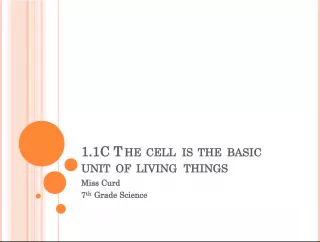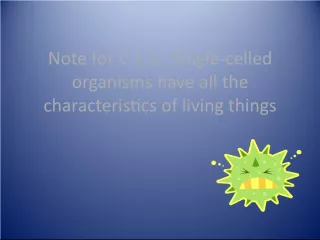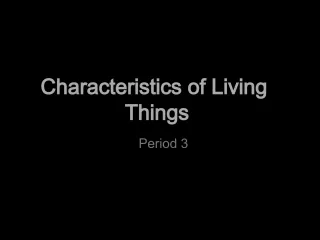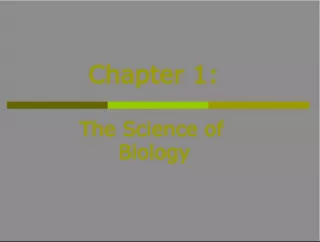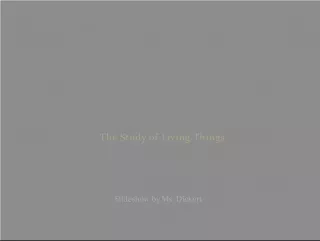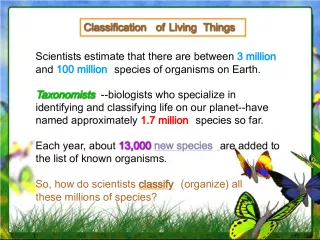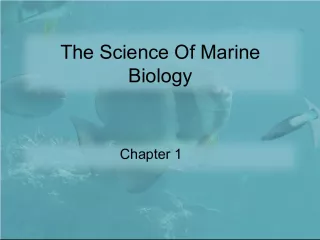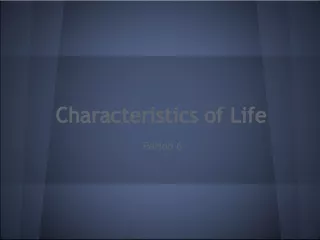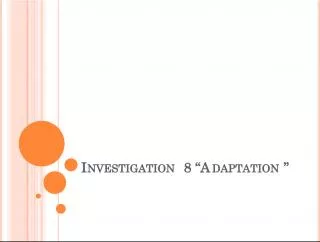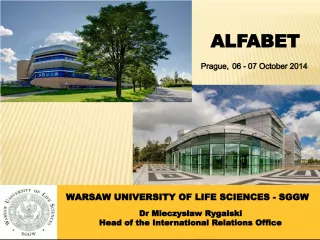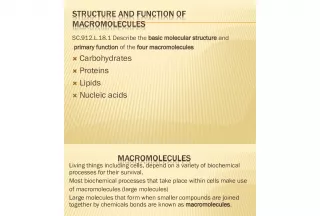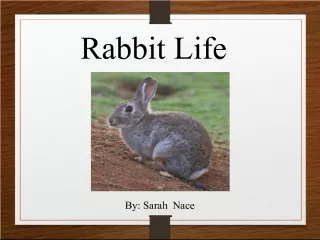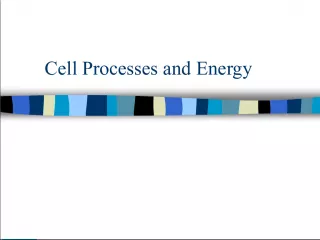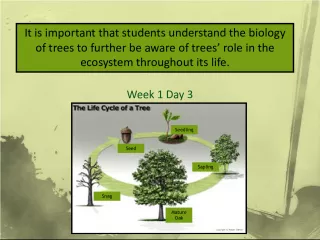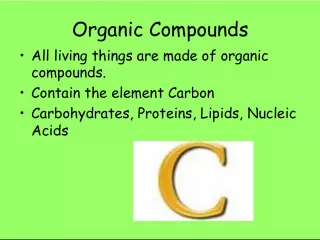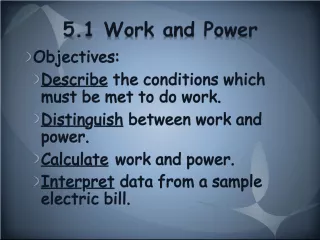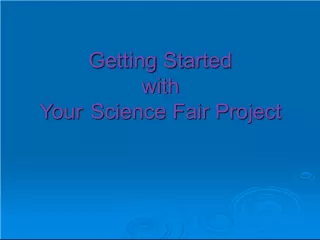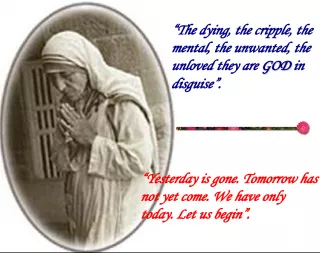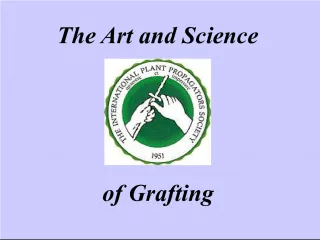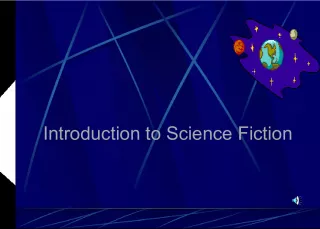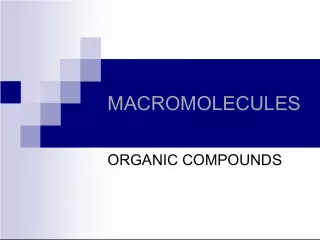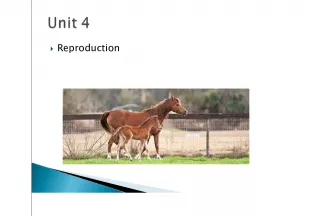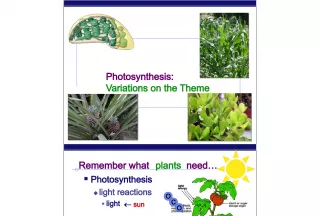The Science of Life: Biology and the Characteristics of Living Things


The study of biology, or bio-logy, focuses on the characteristics that make living things unique. All living things are composed of cells, whether it's a single
- Uploaded on | 4 Views
-
 lillian
lillian
About The Science of Life: Biology and the Characteristics of Living Things
PowerPoint presentation about 'The Science of Life: Biology and the Characteristics of Living Things'. This presentation describes the topic on The study of biology, or bio-logy, focuses on the characteristics that make living things unique. All living things are composed of cells, whether it's a single. The key topics included in this slideshow are . Download this presentation absolutely free.
Presentation Transcript
Slide1The Science of Life Biology bio = living or life -logy = the study of
Slide2Characteristics of Life Cells All living things are composed of cells. Organization All living things are highly organized At the molecular and cellular level From atoms to organisms Energy Use All living things use energy in a process called metabolism. Sum of all the chemical processes that occur in the organism
Slide3Characteristics of Life Homeostasis All livings maintain stable internal conditions. Example: water balance, temperature Growth All living things grow, as do many nonliving things. Some nonliving things, like rock crystals, grow by accumulating more of the materials they are made of. Living things grow by cell enlargement and cell division.
Slide4Characteristics of Life Reproduction All species of organisms have the ability to reproduce. Change Through Time Populations of living organisms evolve through time Importance: without change a specie is prone to becoming extinct.
Slide5Biology- Classification Three Domains of Life Bacteria, Archaea, Eukarya Six Kingdoms Eubacteria Archaebacteria Protista Fungi Plantae Animalia
Slide6Scientific Method(1) Observation (Identify a problem) (2) Research the problem (3) Form a hypothesis
Slide7Scientific Method(3) Hypothesizing (a) Hypothesis is a suggested explanation for what has been seen and recorded, it explains your observations and can be tested. (b) Very important step (4) Predicting * To test a hypothesis, scientists make a prediction that logically follows from the hypothesis. *A prediction is a statement made in advance that states the results that will be obtained from testing a hypothesis, if the hypothesis is supported. *Most often takes the form of an “if-then” statement.
Slide8Scientific Method(5) Experimenting (a) the process of testing a hypothesis or prediction by gathering data under controlled conditions. (b) Controlled experiment * based on a comparison of a control group with an experimental group the control group and the experimental group are designed to be identical except for one factor.
Slide9Scientific Method Independent variable is the one factor. + horizontal (X) axis Dependent variable is measured or observed in both control and experimental groups. Dependent because it is driven by or results from the independent variable. +vertical (Y) axis (c) Analyzing Data (6) Drawing conclusions (a) Modeling- Visual, verbal, or mathematical (b) Inferring- a conclusion made on the basis of facts or premises rather than on direct observations.
Slide10Scientific Method(c) Forming a Theory- a broad and comprehensive statement of what is thought to be true. Supported by considerable evidence and may tie together several related hypotheses.
